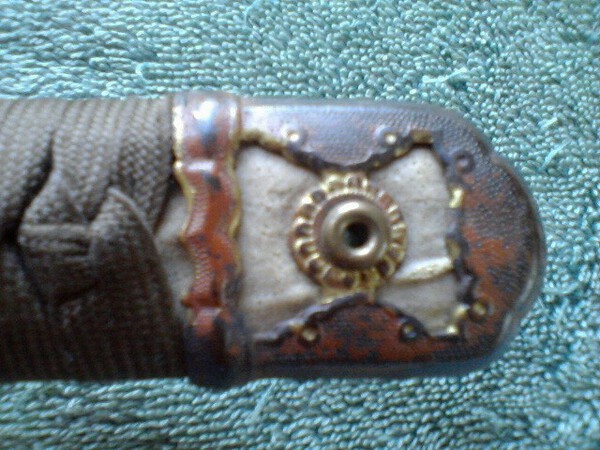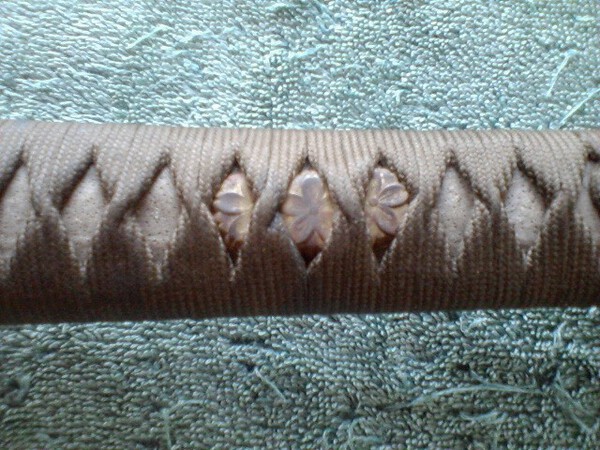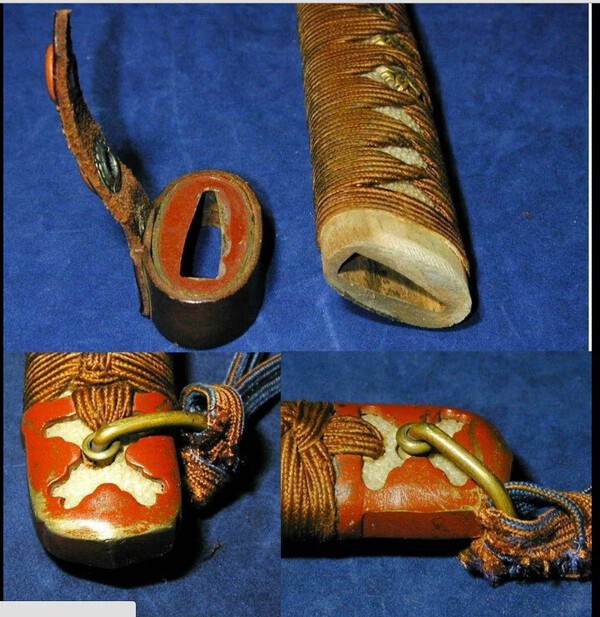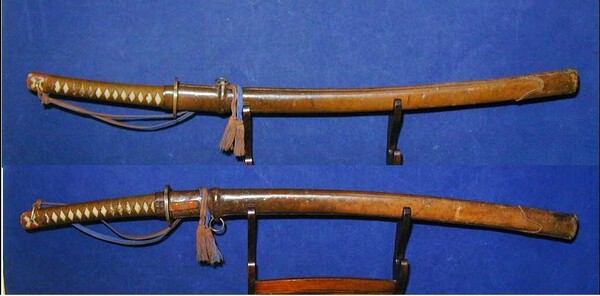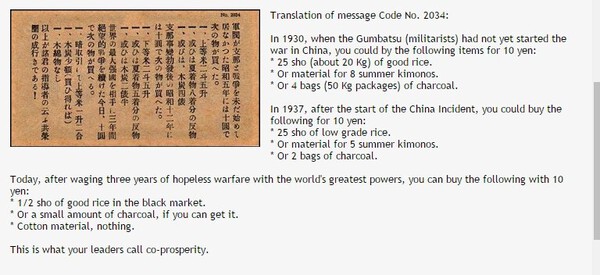-
Posts
1,691 -
Joined
-
Last visited
-
Days Won
11
Content Type
Profiles
Forums
Events
Store
Downloads
Gallery
Everything posted by Dave R
-
I am always wary when I see the Ito-maki style change along the length of the Tsuka, unless it's Katatamaki which usually starts and finishes with Hineri-maki. I get really wary when I don't see a good finishing knot.... To me it indicates damage, and then repair by unskilled persons unable to rebind and finish properly, either from lack of skill, or lack of enough Ito.
-

Question Re: sword straightening
Dave R replied to Utopianarian's topic in General Nihonto Related Discussion
Soaking in hot water is actually one of the safest ways of heating a blade, controlled temperature, even distribution of heat, no heat staining to the blade. Aftercare the same as you would expect, dry it off while still hot, wipe down or spray with 99% isopropil alcohol and then a good dose of sword oil. Have I done this successfully myself, well yes, and with no problems, but with the caveat that it was a rather knackered WWII Showato of little value. Would I do it with a really valuable blade.... no, I know my limitations. -
Long enough that the question will not arise in our lifetimes..... Barring abuse and neglect of course.
-

Waki information request/help
Dave R replied to Andymac's topic in General Nihonto Related Discussion
Use it as a tsunagi. -
My thought was that this is a shortened saya, and the cavity is part of the original void.
-
Is it an actual separate chamber or a continuation of the main cavity?
-
I would go with wartime Chinese made, possibly for Ta Tao. The Ito-maki is wrong for anything assembled by a Japanese artisan...... A view of the tang would answer some questions though.
-
An interesting article indeed, thanks for sharing. I do suspect though that they were casting "Knife Money" rather than swords...
-
I had an all metal two piece mekugi turn up in a group of Sarute barrels that I bought from Japan. Still have it tucked away, waiting for the right tsuka.
-
Personal experience buying from Japan... they often get mixed up between Iron and copper alloy and post one when they mean another. Unless we can get confirmation otherwise, this might even be cast bronze....
-
The higher the carbon content, the harder to forge or work in any way, which is why you get all the other processes used in the past to get a workable metal. So, no you really cannot cast a really rough overly large sword type thing, re-heat and gently knock it into the shape of a "not for war" small sword. It's barely possible with Wootz which demands such a special skill set that Western smiths pretty well gave up on it. What do I reckon, I reckon some non technical writer got it wrong and sent us all down the rabbit hole.
-
I don't know, but that looks like a bodge job rather than anything official.
-
Thanks everybody for your rapid response which has been passed on.
-
A friend posted this on another forum, and there is some debate as to it being Chinese or Japanese... can anyone help with a translation please. Made of lacquered paper apparently and bound with rattan.
-

Emergency Late War Officer Gunto
Dave R replied to Bruce Pennington's topic in Military Swords of Japan
... Here is another... which looks perfectly standard, til you use a magnet and find all the metal is stamped iron or steel and plated to look regulation.. -

Emergency Late War Officer Gunto
Dave R replied to Bruce Pennington's topic in Military Swords of Japan
-
The PRC Red Army issued a carbon copy of the Japanese type 32 to their cavalry as late as the 1970's,... but with a plastic grip. Your choice, but I hear faint alarm bells here.
-
Very wrong indeed. Perhaps of interest, there is evidence for China continuing to produce and use "bronze" swords for quite some time after they could cast iron. This I thinks says a lot about their opinion of cast iron swords. Apparently later on they developed their own method of carbon reduction, which was to cast thin plates of iron and then decarburise with a prolonged heat in a furnace before forging. In the West we went a different direction with "puddling furnaces".
-
-
People inventing the wheel again. There is a lot known about early iron production, and much information available.... Finding it on the internet though is another matter due to search engines pollution with most popular as opposed to most useful. Early iron refinement starts with bowl furnaces/hearths, bloomeries and blooms of mixed slag and metallic iron.... Which is where the repeated folding and hammering comes in. https://exarc.net/issue-2022-1/at/little-bowl-could-experimental-iron-smelting-bowl-furnace
-

Emergency Late War Officer Gunto
Dave R replied to Bruce Pennington's topic in Military Swords of Japan
Just to say that from the Japanese perspective 1942 is "very late war" to quote... "The beginning of the war is conventionally dated to the Marco Polo Bridge Incident on 7 July 1937, when a dispute between Japanese and Chinese troops in Peking escalated into a full-scale invasion. Some Chinese historians believe that the Japanese invasion of Manchuria on 18 September 1931 marks the start of the war. This full-scale war between the Chinese and the Empire of Japan is often regarded as the beginning of World War II in Asia." .....https://en.wikipedia.org/wiki/Second_Sino-Japanese_War It was the wartime shortages of needed resources that drove Japan to war with the US and UK in 1941, primarily oil, but also steel and other materials. Nicely summed up by this US propaganda leaflet dropped on Japan. -

Japanese Swords Made In China During World War II
Dave R replied to Kiipu's topic in Military Swords of Japan
Made for the Japanese military, so Shin Gunto would be an appropriate term I suppose, or the more general Katana. -
Looks like old cosmolene to me as well, G'd knows where these stories originate from!
-
A French provenance would fit well with it being a Vietnamese sword.











.thumb.jpg.2998617f8f85ec7c4761a49b43769287.jpg)
